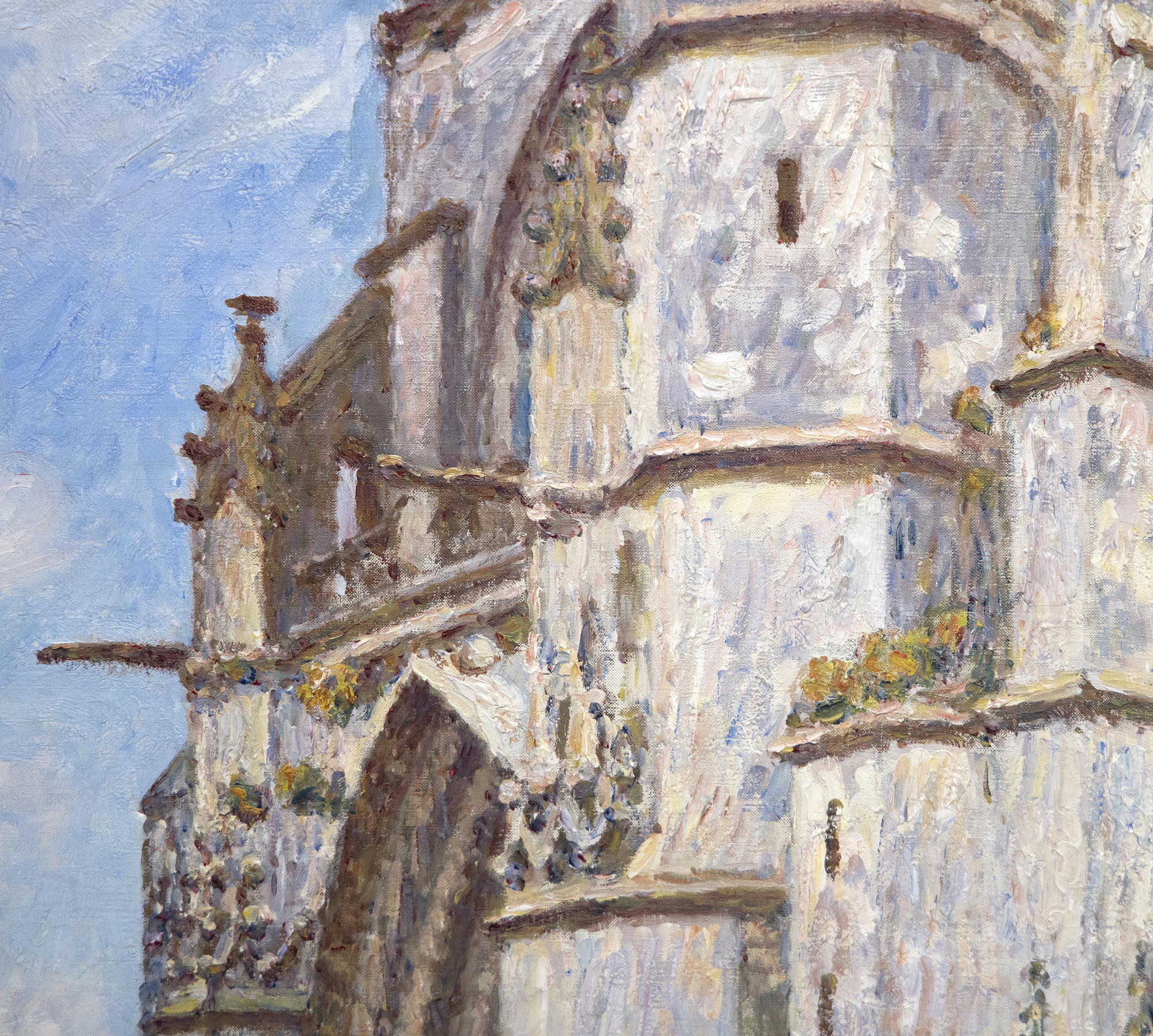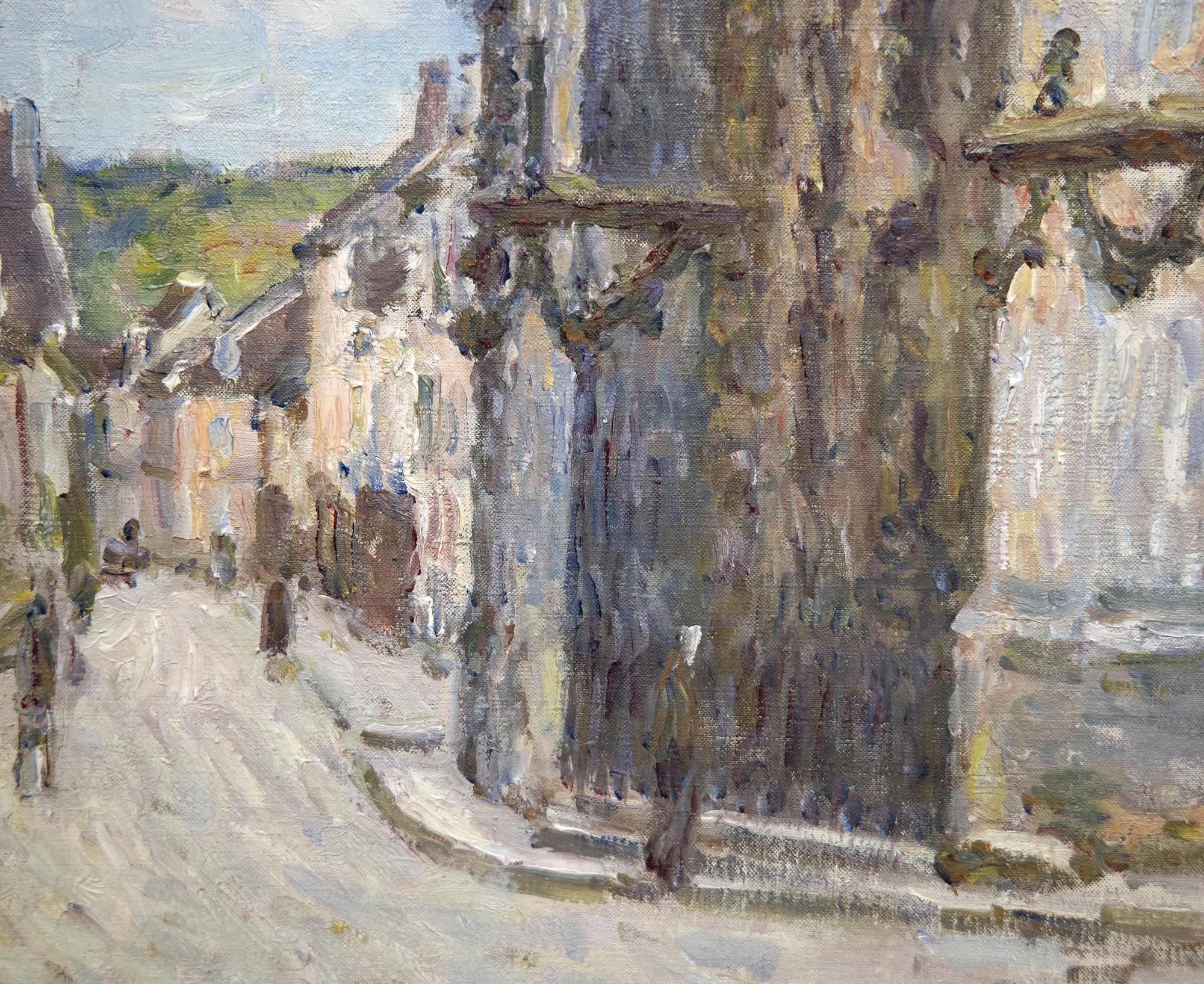ALFRED SISLEY (1839-1899)










Provenienz
Anwesen SisleyVerkauf: Vente de l'Atelier Sisley, Galeries Georges Petit Paris, 1. Mai 1899, Los 13
George Viau, Paris
Verkauf: Hôtel Drouot Paris, 20. Februar 1908, Los 37
Sammlung Pearson, Paris (erworben bei der oben genannten Versteigerung)
Versteigerung: Vente Pearson, Galerie Paul Cassirer Berlin, 18. Oktober 1927, Los 65
Privatsammlung
Verkauf: Hôtel Drouot, Paris, 23. Juni 1928, Los 98
Sammlung Aubert, Paris (erworben bei der oben genannten Versteigerung; möglicherweise Marcel Aubert)
Privatsammlung Galerie Edward Nahem
S...Mehr.....teven Bedowitz, Boca Raton, Florida (erworben 1989)
Privatsammlung, New York
Larry Lacerte, Dallas (erworben im Jahr 1991)
Privatsammlung (erworben 1996)
Ausstellung
Tokyo, Isetan Museum of Art; Kagawa, Takamatsu Municipal Museum of Art; Hiroshima, Museum of Art und Wakayama, Departmental Museum of Modern Art, Exposition Alfred Sisley, 2000, Nr. 53, illustriert in Farbe pp. 138-139Literaturhinweise
O. Reuterswaerd, 'Sisley's Cathedrals, A Study of the Church at Moret' in Gazette des Beaux Arts, März 1952, Abb. 1, illustriert S. 194F. Daulte, Alfred Sisley. Catalogue raisonné de l'œuvre peint, Lausanne, 1959, Nr. 835, schwarz-weiß illustriert
F. Daulte, Sisley. Les Saisons, Paris, 1992, Nr. 41, abgebildet in Farbe S. 73
R. Shone, Sisley, New York, 1992, Abb. 134, farbig illustriert S. 170 (erwähnt S. 164-165)
Brame, S., Sisley, A., Lorenceau, F., & Daulte, O. (2021). Alfred Sisley: Catalogue critique des peintures et des pastels. S. 347 ill. 347, 501
...WENIGER.....
Geschichte
Zwischen der Île-de-France und Burgund, am Rande des Waldes von Fontainebleau, liegt das mittelalterliche Dorf Moret-sur-Loing, das im12. Jahrhundert gegründet wurde. Als Alfred Sisley in einem Brief vom 31. August 1881 an Monet den Charakter des Ortes als "eine Schokoladenlandschaft" beschrieb, meinte er damit, dass der Bergfried, die Stadtmauer, die Kirche, die befestigten Tore und die verzierten Fassaden entlang des Flusses für einen Maler eine Kulisse von unvergleichlichem Reiz darstellten. Eine alte Kirche, die immer das auffälligste Merkmal des Stadtbildes im Seine-Tal war, würde in Sisleys Stadtansichten ebenso präsent sein wie bei Corot und bei Monet in Vétheuil. Doch im Gegensatz zu Monet, der dreißig Ansichten der Kathedrale von Rouen schuf, um das Spiel von Licht und Schatten auf der Fassade der Kathedrale nachzuvollziehen und den flüchtigen Charakter der momentanen Veränderungen von Licht und Atmosphäre einzufangen, wollte Sisley den dauerhaften Charakter der Kirche Notre-Dame in Moret-sur-Loing bekräftigen. Monets einziges Anliegen waren Luft und Licht, und Sisleys Gemälde scheint eine Hommage zu sein. Das Gemälde verströmt Respekt vor den ursprünglichen Architekten und Erbauern eines Bauwerks, das so uneinnehmbar und entschlossen war, dass es damals wie im Mittelalter stand und für uns heute wie für alle Ewigkeit bestehen wird.
Dennoch war Sisley bestrebt, die wechselnde Erscheinung des Motivs durch eine Reihe von atmosphärischen Veränderungen darzustellen. Er gab den Werken Titel wie "Im Sonnenschein", "Unter Frost" und "Im Regen" und stellte sie 1894 im Salon du Champ-de-Mars als Gruppe aus, was darauf hindeutet, dass er sie als serielle Interpretationen betrachtete. Im Gegensatz zu Monets Werk l'église de Moret zeigt le Soir jedoch, dass Sisley das Motiv in einem räumlichen Kontext darstellte, der seine kompositorischen Attribute hervorhebt - die abfallende Perspektive der schmalen Straße links, der starke diagonale Rücksprung der Gebäudelinien als Gegengewicht auf der rechten Seite und das imposante Gewicht des steinernen Gebäudes oberhalb der Sichtlinie.
MARKTEINBLICKE
- Der Rekordpreis für ein Sisley-Gemälde bei einer Auktion liegt bei über 9 Mio. $ und wurde 2017 von einer Winterlandschaft erzielt, die deutlich kleiner ist als L'église de Moret, le Soir
- Es gibt nur 884 Ölgemälde von Sisley, von denen sich viele in ständigen Museumssammlungen befinden, so dass nur wenige hervorragende großformatige Exemplare für den privaten Verkauf in Frage kommen.
- L'église de Moret, le Soir ist im Vergleich zu anderen Werken Sisleys außergewöhnlich groß und befindet sich seit 1996 in derselben Privatsammlung, was seinen Wert noch erhöht.
- Es ist rechts unten signiert "Sisley 94" und im Sisley-Katalog raisonné dokumentiert (F. Daulte, Lausanne, 1959, Nr. 835, schwarz-weiß abgebildet)
- Das Bild zeigt die Kirche Notre Dame in Moret, ein wichtiges Motiv, das Sisley seit seiner Niederlassung in Moret im Jahr 1889 fast ein Dutzend Mal wieder aufgriff.
Vergleichbare Gemälde bei einer Auktion verkauft

"Effet de Neige à Louveciennes" (1874) wurde für 9.064.733 Dollar verkauft.
- Kleineres Gemälde mit einer gedämpften Farbpalette, aber schönen Schatten
- Seltene Winterszene
- Rekordpreis für Sisley bei einer Auktion im Jahr 2017

"Le loing à Moret" (1883) wurde für 4.869.000 $ verkauft.
- Deutlich kleiner als unser Stück
- Weniger gut verarbeitet und ohne Zahlen
- Schönes Licht und Farbpalette

"Moret-sur-Loing" (1891) für 4.685.031 $.
- Große Sisley-Gemälde wie dieses und unseres sind selten und noch wertvoller
- Vor acht Jahren für über $4,6 Mio. verkauft, und der Markt ist gewachsen

"Le loing à Moret, en été" (1891) wurde für 5.746.135 $ verkauft.
- Eine weitere große Leinwand von vor ein paar Jahren
- Wie unser Gemälde enthält es eine Figur, die den Wert erhöht.







































